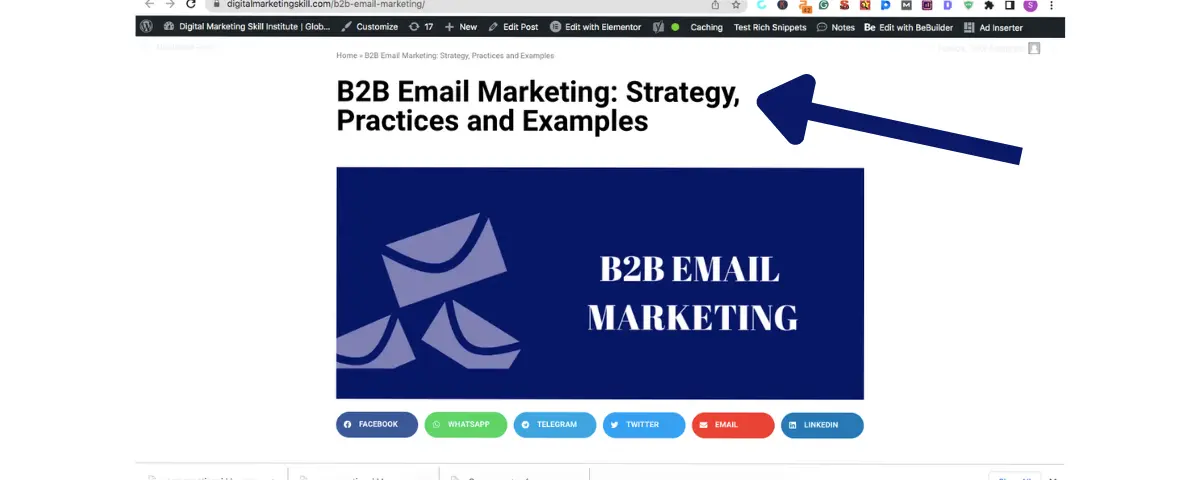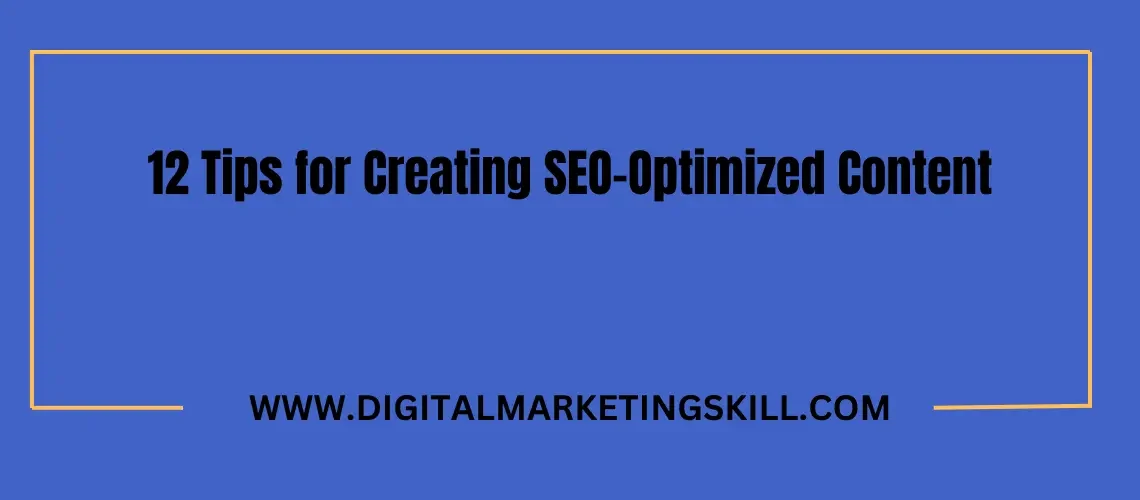Writing a blog post can be a very tedious process. It’s even hurtful when that post, after all your efforts, doesn’t seem to rank on Google search engine result pages. This is where SEO content writing comes in.
SEO content writing allows you to structure your content in a way that makes it easier for search engines to crawl, index, and service it so it can rank. If you want to find out how this can be done, stay with us, because in this article we will be covering what SEO content writing is all about, why it is important, how it is done, and tips to follow as an SEO content writer.
What is SEO content writing?

SEO content writing involves all the processes in writing content that will rank on Google search engine results pages or other search engines. This content is usually structured around a specific keyword. One of the benefits of SEO content writing is the influx of organic traffic it brings to a business’s website.
This year, content writing can be done by conducting keyword research and crafting optimized content that meets our needs. So to craft optimized content, you have to ensure the content is valuable, informative, and engaging for the audience.
Why is SEO content writing important?
The main reason SEO content writing is important is because it helps content rank better on Google. Content that is not optimized will not rank on search engine results pages.
Get 50% Discount to Master ALL Aspects of Digital Marketing That Can Earn You $2,500 - $5,000 a month (Even if you are a complete beginner!)
Our students that intentionally implement what they learn from our digital marketing course make back the entire course fee within a single month or more after completing our course because our course gives them many income generating options with unlimited earning potential with no age or location barrier. The best part is no technical skills are required.
An opportunity to change your lifestyle and make money working from anywhere in the world. The results our students get from our digital marketing course prove this could be applied to any market or country and that it is designed for any skill level and work background.
*By signing up, you agree to our privacy policy and terms of service.
Studies have shown that users don’t go beyond the first page; in fact, most users don’t go beyond the first four ranking articles. So this means that if your article is not on the first page, your audience won’t see it. Structuring your articles using SEO content writing also saves the cost of having to pay for PPC ads to rank higher. Unlike PPC ads that pay to rank higher, and if you stop paying your content might rank lower. SEO content writing offers sustainable organic traffic that you don’t have to pay for your content to rank on the first page of Google search engine results pages.
12 Steps for Creating SEO-Optimized Content
1) Find a niche
When you’re about to write an article, the first step would be to find a niche that you write about. It could be digital marketing, fashion, or sports education. If you’re already writing for a brand, company, or business, find out what their niche is. Go through the previous posts to find out what was written about in the past. All these can give you an idea about the niche or niches you are interested in. Yes. It is also normal for a business to have more than one niche.
2) Finding keywords
The next step is to find a keyword for that niche. Keywords are just search queries that users put into search engines. Conducting keyword research has been made easier with tools like Semrush, Ahrefs, and Google Keyword Planner. You can also conduct keyword research by searching the topic on the Google Search Engine. I’m going to ask people to also search for sections.
This can give you ideas on what to search for. When choosing keywords, especially for new businesses, be sure to choose keywords that have low competition and a high search volume of 1,000 to 10,000 results.
Search volumes can go as high as one median result; usually, the higher the search volume, the higher the competition, and this can make it difficult for small or new businesses to rank, especially because they are already bigger brands that have more dominant, more optimized content, and more backlinks.
Using tools like Quora, Reddit, Google Trends, and even Answerthepublic can give you insight into the minds of users to see the queries most searched for in your niche. These tools work by going around the internet to look for questions that people have about the topic you searched for. These tools help to create contents that answer the questions of users. You can also use tools like this to turn topics into keywords.
3) Quality content
Creating content that is relevant to your audience is a very important step. Search engines reward pages that bring relevant content to users, especially content that meets user needs. Writing good content isn’t enough. Your content has to be the best, or else it won’t rank. You can go to your competitor’s pages, study what you write about, and use it to produce better content for your brand.
Your content shouldn’t just be short and shabby. Just because a piece of content is long doesn’t mean it will rank. Comprehensive content most often answers old questions of the audience, and this is what your content should strive to do. Comprehensive content is more likely to be longer than the average of 800 words you’ll see in the blog post.
Longer, more comprehensive content not only gives people more information about your webpage it also shows broader and more in-depth research on the part of the writer. Always keep in mind that your competition may make it easy to write long content, so you can’t sleep on that.
4) Add Keywords to content
This is a huge part of SEO content writing. Your article should contain focused keywords. This isn’t to say that you add your focus keywords everywhere in your article, including places where they are needed. This act is called keyword stuffing, and search engines are heavily involved in it. Your content should, however, have the focused keyword in strategic places such as your title tag, your URL, the meta description, the first paragraph of the content, H1 tags, H2 tags, and even your image alt text.
Your keyword should also be found in the body of your content, as long as it is relevant.
Here is an example: B2B email marketing that is seo optimized content.
Title tag: In the image below, the keyword appears in the title tag and at the beginning. SEO tools like Yoast, Rank math would always advise for this to be done.

URLs: The keyword also appears in the URL. Always ensure to edit the URL. If your website runs on WordPress, once you put in your title, the URL also becomes as long as the title, so be sure to edit it to only include the focus keyword.
Meta description: The keyword should be found in the meta description. He allows your audience to have a better idea of what your content is about without opening the article.
Introduction: The focus keyword should be in the introduction and the first 100 words of your content. See below

H1 and H2 tags: The H1 and H2 tags should contain the focused keyword. For websites on WordPress, the title automatically takes on the H1 tag. Always remember that there should be only one H1 tag in your content because it represents the main topic, which is usually the title. H2 represents the subtopics, and H3 is the H2 subtopic.
5) Write Compelling headlines
One of the most important steps in producing SEO-optimized content is writing captivating headlines. These headlines serve as your audience’s first point of contact, enticing them in with the promise of more reading. When you are writing headlines, keep this in mind:
- Use Keywords: To help search engines understand the topic of your material and to increase its visibility in search results, use pertinent keywords in your headlines.
- Be Clear and Concise: Use language that is easy to grasp and concisely conveys the topic or primary advantage of your material in the headline.
- Create Curiosity: To pique your audience’s interest, ask insightful questions, or offer potential solutions to their issues.
- Use Power Words: To draw readers in and encourage them to click, use strong, emotive words that convey a sense of urgency or intensity.
- Be Specific: When possible, include figures or statistics in your headline to make it more believable and captivating.
6) Optimize Content to be user-friendly
After writing your comprehensive content, the next thing is to make it easier for users to consume. Your content may be comprehensive, but if they’re not structured in a user-friendly way, people might find it difficult to go through. Google now puts a priority on user experience to find out which content should rank in the search engine results pages. You can make your content user friendly by doing the following:
- Use shorter paragraphs: Longer paragraphs are cumbersome for some readers, and they just skip it or close your webpage altogether, so break big paragraphs into easily consumable bits.
- Add relevant multimedia: These include images, videos, graphics, and everything else that can improve the aesthetics of your content and make it easier to understand.
- Use simple terms: Notice they don’t want to read through your content and have to go to a dictionary so they can fully understand. If they don’t understand, they will leave as quickly as they came.
7) Add relevant multimedia and alt text
Your content should have relevant multimedia, like images, videos, and chats. Not only does this look aesthetically pleasing and interesting, but they also explain the terms and contents further in your article. Multimedia should not just be added randomly to your content.
This means that your content shouldn’t just be filled with images because the images are good. They should be images that add meaning to your content. Images can be added to subheadings, and images can be added in a step-by-step guide to make it easier to understand.
8) Always match the search Intent
Your content should always match the search intent of users. Search intent is simply the reason why users search for keywords. It could be informational, commercial, navigational, or transactional. For blog posts, the search intent is usually to educate the users, and formats like “How to,” “Step-by-Step Guide,” “The Ultimate Guide to,” and “Listicles” are mostly used for this type of content.
For content with transactional intent, there are usually a lot of images of the product, usually accompanied by price tags and descriptions. Search engines take search intent very seriously, and if your content does not match the search intent, it may not rank.
9) Add External links
External links are divided into outbound links and backlinks. Outbound links are links from your web page to another website. Backlinks are when other sites link to your website. Link building is necessary for credibility. It shows the search engines that your content has references. The outbound links shouldn’t be on the same topic you are trying to rank for. And don’t forget to set to open in a new page for outbound links.
10) Title tag optimization
Your title should be catchy and persuasive, as this is the first thing your target audience sees. We know what they say about first impressions. When optimizing your title tag, remember that:
- It should attract users
- Include numbers, as they show specificity. E.g., rather than “Ways to Make Money Online,” say “10 Ways to Make Money Online in 2024.”
- Always ensure your focused keyword is in your title tag
- Keep your title tag brief. It usually contains about 55 characters. Anything longer will be shortened by Google in SERPs.
11) Add Internal Links
Internal links are links that point users to another page on the same website. Internal links are important for ranking on SERPs. Always ensure that the links go to pages that are related to the content being discussed. Links should be relevant and should not be added to all parts of the content.
E.g, if you are writing about backlinks and you discuss that there are do follow and no follow backlinks, If you have an already published article that talks extensively on do follow backlinks, you can add the link to the phrase “do follow.” This way, the user will see that if they want to know more about do follow backlinks, they can click it.
Ensure that links aren’t broken or open to a 404 page, as search engines consider that.
External links are divided into outbound links and backlinks. Outbound links are links from your web page to another website. Backlinks are when other sites link to your website. Link building is necessary for credibility. It shows the search engines that your content has references. The outbound links shouldn’t be on the same topic you are trying to rank for. And don’t forget to set it to open in a new page for outbound links.
12) Add meta descriptions
Meta descriptions are vital to SEO content writing. It is a compelling summary of what the content is about. It’s meant to affect clicks. The subject description should include the focused keyword. They can help users know the relevance of a page before clicking through. The meta description should be within 50 to 160 characters.
Meta descriptions are usually found below the title of articles on the search engine results pages. Even though meta descriptions don’t directly affect ranking on search engine results pages, they should be optimized to be readable, relevant, and engaging for the readers and should adequately reflect the content of the page. Keyword stuffing should also be avoided in meta descriptions.
SEO Content writing vs Content writing
There are clear distinctions between SEO content creation and conventional content writing, even if both aim to provide readers with useful information. To increase visibility and rank higher in search results, SEO content specifically focuses on optimizing material for search engines by integrating pertinent keywords, meta tags, and other SEO tactics.
Regular content writing, on the other hand, places more of an emphasis on producing interesting, high-quality content that appeals to the target audience rather than necessarily giving search engine rankings top priority. Regular content writing seeks to establish authority, credibility, and trust with readers, whereas SEO content writing seeks to boost website visibility and traffic.
Tips for learning SEO content writing
1. Take professional course
One of the key tips for learning SEO content writing is to take our comprehensive digital marketing course that will offer at Digital Marketing Skill Instiute (DMSI) which covers essential aspects of digital marketing, including SEO strategies. When you enrol in our marketing course, you can gain valuable insights into optimizing content for search engines, understanding keyword research, and implementing effective SEO techniques to enhance online visibility.
2. Stay Updated with Trends
One of the best ways to learn SEO content writing is to stay on top of SEO trends. The world is constantly changing, and with that, the trends are also changing too. You can stay abreast by following blogs, attend webinars, participating in online forums, and being active in the social media spaces where SEO content writing is being discussed.
3. Analyze and track results
Evaluating and analyzing results is an effective way for an SEO content writer to grow. This technique helps you find out what is working, what is not working, and strategies you may need to improve on. Analyze the structure, format, and keyboard usage of top performing content to figure out what works and how you can apply similar tactics to your own writing.
4. Practice writing engaging content
This is another effective way to sharpen your writing skills. Do this by creating content that is informative, valuable, engaging, and appealing to your audience. Set aside time to write consistently, and stick to it. By setting aside a time, let’s say 2 hours each day, to write content, you will notice that not only has it become easier, but you will have improved a lot.
5. Study the basics of SEO
Study the basics, which include keyword research, on-page optimization, and technical SEO. Get yourself familiar with these concepts and apply them to improve your website’s visibility in search engine results pages.
Conclusion
SEO Content writing is a really important technique for businesses and organizations, especially because it improves their ranking in search engine results pages. It is an ongoing process that needs regular analysis and adaptation to the changes in search engine algorithms. Mastering these steps can lead to increased visibility through organic traffic, which leads to conversions and sales.
If you want to learn how to write an article that will rank well on Google and be on the first page, then click here to learn how we can help you achieve that.
FAQS
How does SEO work in content writing?
In content writing, SEO, or search engine optimization, works by making the content more optimized to appear higher in search engine results pages (SERPs). Many crucial components are involved in this process:
To determine the terms and phrases that consumers frequently search for about the issue, keyword research is first carried out.
To indicate relevancy to search engines, carefully place these keywords throughout the content, including titles, headers, and body text.
Second, search engines can easily crawl and comprehend the content because of its easy-to-understand layout. This includes clear and concise headlines, organized text with distinct subheadings, and the utilization of formatting tools like numbered lists and bullet points.
Thirdly, we write SEO-friendly URLs, meta titles, and meta descriptions to attract customers to click on the link and provide search engines with more context.
Lastly, priority is given to outstanding content that is useful, educational, and engaging to the intended audience. Content that satisfies these requirements is more likely to score well in search results since search engines strive to provide users with the most relevant and helpful content possible.
What kind of content is best for SEO?
The best content for SEO is high-quality, relevant, and engaging content that provides value to the audience and answers their queries effectively. Content formats like blog posts, articles, guides, infographics, videos, and interactive content tend to perform well for SEO as they attract and retain user interest, leading to better rankings in search engine results
Why do I need quality content writing for my website?
Because it forms the basis for attracting visitors, building trust, and encouraging conversions, high-quality content writing is crucial for websites. Well-written, interesting, and relevant material can draw in and hold visitors’ attention, enticing them to explore more and stay on the website longer.
Furthermore, excellent content positions the website as a trustworthy information source in its sector and fosters audience confidence and trust. Additionally, search engine optimization (SEO) depends on high-quality content authoring since it raises a website’s exposure and rating in search results, which increases organic traffic.
More resources
Content Writing: How To Write A Great Content in 6 Steps
4 Basic SEO Tips For Beginners To Rank On Google (Video Tutorial)





